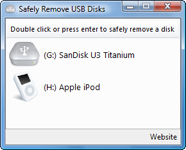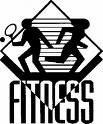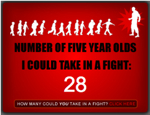February 12, 2008 – 5:55 am
 I was reading the newspaper last Sunday when I came across a story that was picked up by the Associated Press about a 70-year-old Utah woman who was arrested for not watering her lawn. Over the years, I have learned to take the accuracy of newspaper articles with a grain of salt. I can still remember one occasion where I responded to homicide during a evening shift. When I got up the next day, I scanned the newspaper to see if they had reported anything about the incident. There was an article in the paper about a homicide but, with the exception of the location, the facts were so inaccurate that at first I didn’t even recognize the incident they were describing as the one I had worked the night before. However, for the purposes of this article, we will assume that the information contained in the article was essentially accurate.
I was reading the newspaper last Sunday when I came across a story that was picked up by the Associated Press about a 70-year-old Utah woman who was arrested for not watering her lawn. Over the years, I have learned to take the accuracy of newspaper articles with a grain of salt. I can still remember one occasion where I responded to homicide during a evening shift. When I got up the next day, I scanned the newspaper to see if they had reported anything about the incident. There was an article in the paper about a homicide but, with the exception of the location, the facts were so inaccurate that at first I didn’t even recognize the incident they were describing as the one I had worked the night before. However, for the purposes of this article, we will assume that the information contained in the article was essentially accurate.
When the story is distilled down, the facts are as follows. A 70-year-old woman hadn’t watered her lawn in more than a year, and the condition of her yard violated an city zoning ordinance. An officer attempted to issue her a summons for the violation but she refused to provide her name or sign the summons promising to appear at the hearing. If you are a cop, you can probably guess what happened next. Unfortunately, she didn’t want to go to jail either, so a struggle ensued and it went downhill from there. The woman ended up being arrested, booked and thrown in jail. I guess you could say that by following the letter of the law, justice was served and the cop did what had to be done . . . or not!
There is no way that a cop is going to come out of a situation like this looking good. Unfortunately, most of us have found ourselves in a similar situation where, what started as a minor situation somehow escalated into a knock down, drag out fight. My moment in the sun started as a truancy at 1:30 pm on the nearly deserted streets of a downtown housing project and ended with an all units call for assistance and seven arrests. I will spare you the messy details but it definitely got a little exciting for a while.
The common theme in these incidents is that neither of us acted outside the authority granted to us under the law. However, neither of us probably exercised the type of judgment and self-control that the public might reasonably expect from a professional law enforcement officer.
In my case, the cops that worked in the projects had an unwritten code of survival – never back down. We firmly believed that a cop wouldn’t last long in the projects once he got a reputation for backing down from the bad guys. Fortunately, no one was injured but I learned that an ego can be a terrible thing.
In the case of the Utah officer, a police spokesman diplomatically explained the situation saying, “Every officer in his career has situations they find themselves getting into, at the end of it they scratch their head and say, ‘gosh, how did this happen?’ Today, I think, was one of those days. Clearly there were some other options available.” The police are not pressing any charges against the woman for either neglecting her yard or resisting the ticket and the cop has been placed on administrative leave.
Sometimes it takes years of experience and maturity to figure out that just because the law says you “can” do something it doesn’t mean that you “must” do it on every occasion. During your entry level academy, someone probably mentioned the concept of discretion. Unfortunately, some officers never grasp the importance of this concept and it can create a public relations nightmare for their agencies.
Lets consider how the situation might have turned out if we could go back in time to the point when the officer realized that the woman was not going to cooperate with his effort to issue her a summons. At that point, he had a decision to make. On the one hand, the law in most states says that if a person fails to promise to appear in court they should be taken into custody. Of course, failing to provide one’s name or refusing to sign a summons will normally get you a quick ride in a patrol car – as it did in this case. However, the officer could have used a problem solving approach to the situation that may have prevented it from escalating into an embarrassing incident for himself and his agency.
Here are some of the facts that the officer should have considered. The “crime” was a relatively minor violation of the law that was not a danger to public safety. The situation had been going on for over a year and a summons was not going fix the situation. The violator was a 70-year-old woman that either didn’t fully understand the consequences of her actions or was very upset or both. The officer was probably becoming upset by the woman’s failure to obey his instructions.
At this point, I would argue that the best course of action would have been to take no action. Had the officer just said, “Ms. Perry, you are obviously upset right now so I’m going to give you a day to think about your situation. You need to contact the city to work out a solution to this issue. If you fail to do so by tomorrow at this time, I am going to come back and issue you a summons. If you fail to cooperate with me by providing the information that is required on the summons or you fail to sign the summons indicating that you will appear in court, I will be forced to arrest you, place you in handcuffs and take you to jail. I don’t want to do that but if you don’t do as I say, you will leave me with no alternative.” Had the officer done this, made a note of his instructions and then informed his supervisor of his actions, this situation would have probably turned out differently.
The manner in which the arresting officer handled this situation was probably “legally” correct but it was not “reasonably” correct. The officer’s actual actions failed the “Reasonableness Test” which is a really simple way to stay out of hot water.
Here’s how it works. When you realize that a situation is starting to escalate, ask yourself one question, “Is what I am about to do reasonable given all of the facts and circumstances?” If the answer is no, back off and try to de-escalate the situation even if it means backing down for now and coming back later when you are better prepared to deal with the situation. That’s it!
Remember, even General Douglas MacArthur was forced to back down and return at a later date to accomplish his mission.
Posted in Supervision | No Comments »
 If you had important personal information, naturally you would keep it locked up in a secure location. However, more and more of our important information is stored on a computer. Now you can secure your important digital information using My Lockbox.
If you had important personal information, naturally you would keep it locked up in a secure location. However, more and more of our important information is stored on a computer. Now you can secure your important digital information using My Lockbox.
 Thumb drives are handy little gadgets. They let you carry around music files or even programs and they are much more convenient than floppy discs or CDs.
Thumb drives are handy little gadgets. They let you carry around music files or even programs and they are much more convenient than floppy discs or CDs. The economy has not been kind to folks that are trying to make ends meet on a fixed income. Even if you have not reached your golden years, you may know someone that has and it tough. Its one thing not to be able to buy a new car but it is something else to be unable to pay for prescriptions or heating.
The economy has not been kind to folks that are trying to make ends meet on a fixed income. Even if you have not reached your golden years, you may know someone that has and it tough. Its one thing not to be able to buy a new car but it is something else to be unable to pay for prescriptions or heating. Do you have a camera on your cellphone? If you are like me, you thought it was a big deal when you first bought your phone but the novelty quickly wore off. In fact, I not sure I still remember how to take a picture with my Motorola Razr phone. It sort of makes you wonder what good it is to have camera on your cellphone doesn’t it? Of course, there are probably a lot of ways we could use our pocket cameras if we put a little thought into it so lets give it try.
Do you have a camera on your cellphone? If you are like me, you thought it was a big deal when you first bought your phone but the novelty quickly wore off. In fact, I not sure I still remember how to take a picture with my Motorola Razr phone. It sort of makes you wonder what good it is to have camera on your cellphone doesn’t it? Of course, there are probably a lot of ways we could use our pocket cameras if we put a little thought into it so lets give it try. When was the last time that you examined your training calendar with “why” in mind? When most people look at the annual training calendar, they are interested in “what” training courses are available and “when” they are scheduled to occur. However, as a training manager it is very important for you to periodically step back from the day to day challenges of conducting training long enough to ask yourself “why” certain courses keep finding their way on to your annual training calendar. If you are an agency administrator who is working with a limited training budget, it may be time to start asking yourself why you are sending your officers or deputies to certain training courses year after year.
When was the last time that you examined your training calendar with “why” in mind? When most people look at the annual training calendar, they are interested in “what” training courses are available and “when” they are scheduled to occur. However, as a training manager it is very important for you to periodically step back from the day to day challenges of conducting training long enough to ask yourself “why” certain courses keep finding their way on to your annual training calendar. If you are an agency administrator who is working with a limited training budget, it may be time to start asking yourself why you are sending your officers or deputies to certain training courses year after year. Getting text and other content out of a PDF document can be a real pain. You can use Preview on the Mac or buy the full version of Acrobat for Window to get copy-and-paste capability but sometimes that is not enough. Acrobat’s “save as text” option is always a crap shoot – particularly on a long document.
Getting text and other content out of a PDF document can be a real pain. You can use Preview on the Mac or buy the full version of Acrobat for Window to get copy-and-paste capability but sometimes that is not enough. Acrobat’s “save as text” option is always a crap shoot – particularly on a long document. I was reading the newspaper last Sunday when I came across a story that was picked up by the Associated Press about a
I was reading the newspaper last Sunday when I came across a story that was picked up by the Associated Press about a  When I was younger and wasting away my youth and my money on partying, the only exercise in which I consistently engaged was chasing skirts. With the exception of the annual PT tests when I was in the Army, I never really had any fitness goals. I was always quick to point out that there were more old drunks around than old doctors. I later found out that it wasn’t uncommon for them to be one in the same but I digress.
When I was younger and wasting away my youth and my money on partying, the only exercise in which I consistently engaged was chasing skirts. With the exception of the annual PT tests when I was in the Army, I never really had any fitness goals. I was always quick to point out that there were more old drunks around than old doctors. I later found out that it wasn’t uncommon for them to be one in the same but I digress. Finally, we will be able to almost totally eliminate those trips to the bank. For those of us who have been using on-line banking for a while, that trip to the bank to deposit a check remained the final impediment to totally on-line banking. Now CheckFree Corporation is introducing a new service will let us deposit checks from home.
Finally, we will be able to almost totally eliminate those trips to the bank. For those of us who have been using on-line banking for a while, that trip to the bank to deposit a check remained the final impediment to totally on-line banking. Now CheckFree Corporation is introducing a new service will let us deposit checks from home. A Mississippi politician introduced legislation that would ban obese people from restaurants. He says he was “trying to shed light on the issue.” If it was public debate that he wanted, boy did he get it. I wonder how fat you have to be before you are too fat.
A Mississippi politician introduced legislation that would ban obese people from restaurants. He says he was “trying to shed light on the issue.” If it was public debate that he wanted, boy did he get it. I wonder how fat you have to be before you are too fat. This article actually appeared in the BBC News Magazine Monitor on January 1st but I just came across it. Some of the items are a bit British in nature but the article includes links to a lot of interesting stories. Check out how the Brits kicked off there 2008 by looking back at the best of last year.
This article actually appeared in the BBC News Magazine Monitor on January 1st but I just came across it. Some of the items are a bit British in nature but the article includes links to a lot of interesting stories. Check out how the Brits kicked off there 2008 by looking back at the best of last year. I’m just reviewing this website because it’s off the wall. However, if you enjoyed the Excel game from last week, you’ll probably be really excited about this website. Juvenile officers may also find it to be a good stress reliever and also useful information to know.
I’m just reviewing this website because it’s off the wall. However, if you enjoyed the Excel game from last week, you’ll probably be really excited about this website. Juvenile officers may also find it to be a good stress reliever and also useful information to know.




